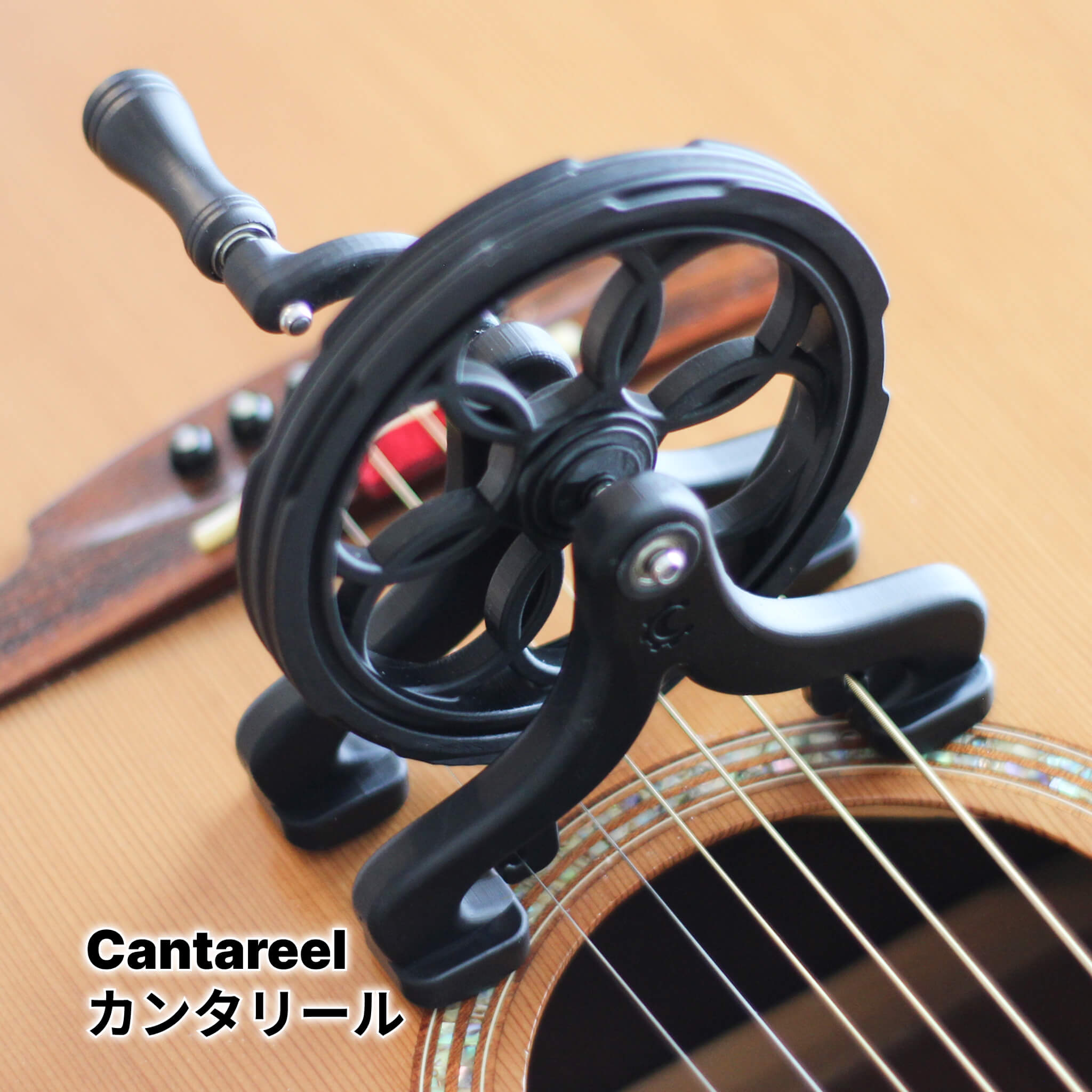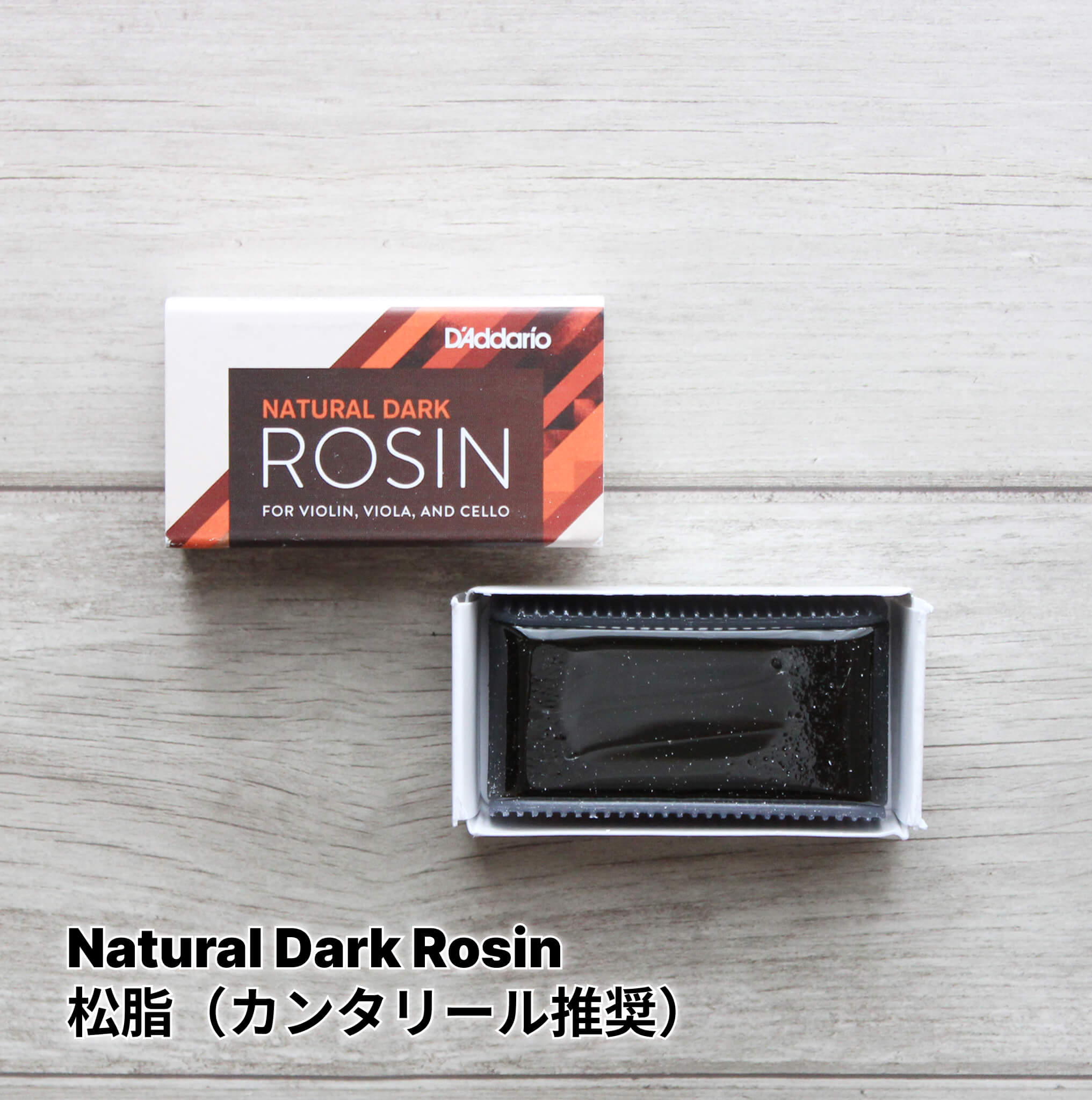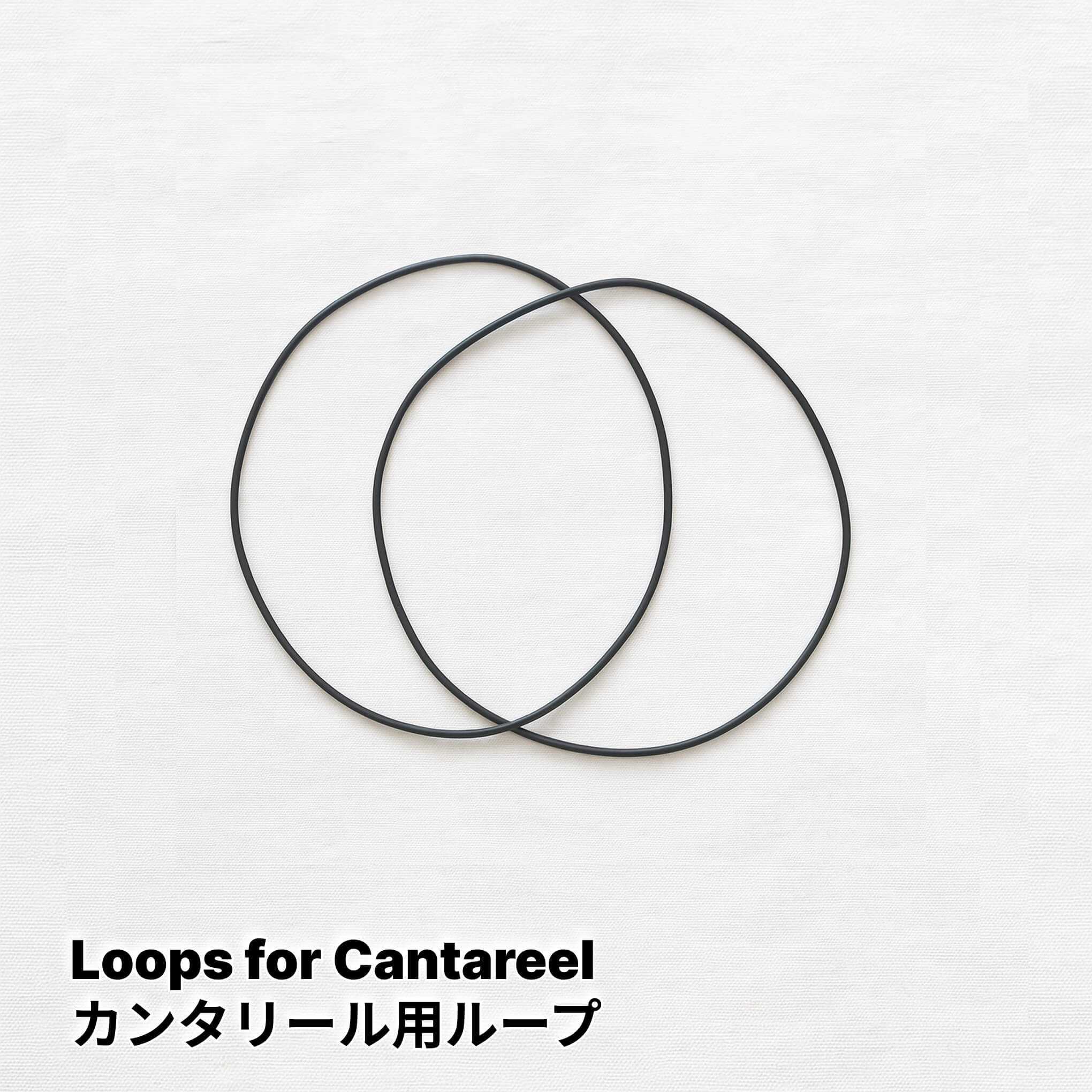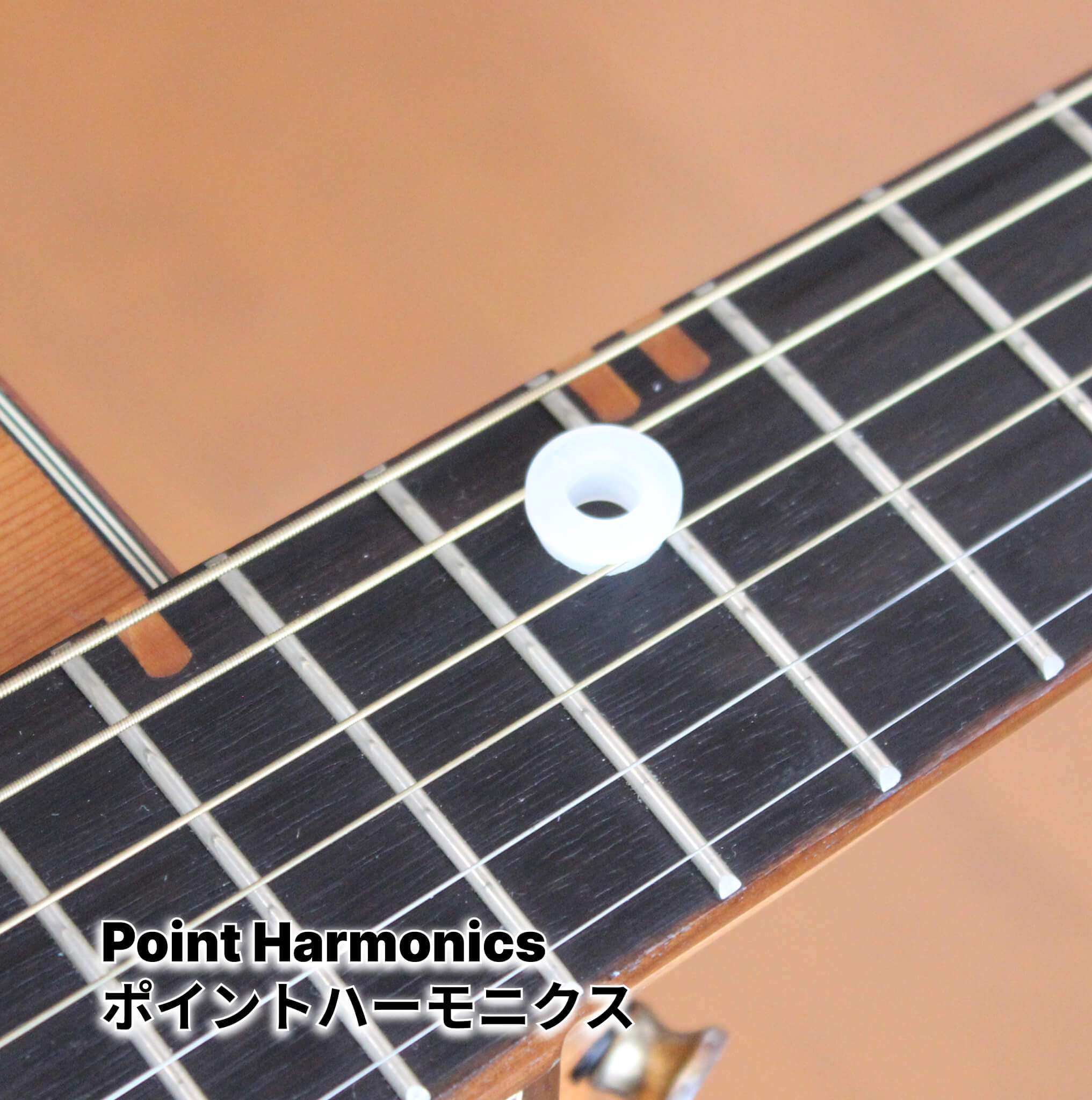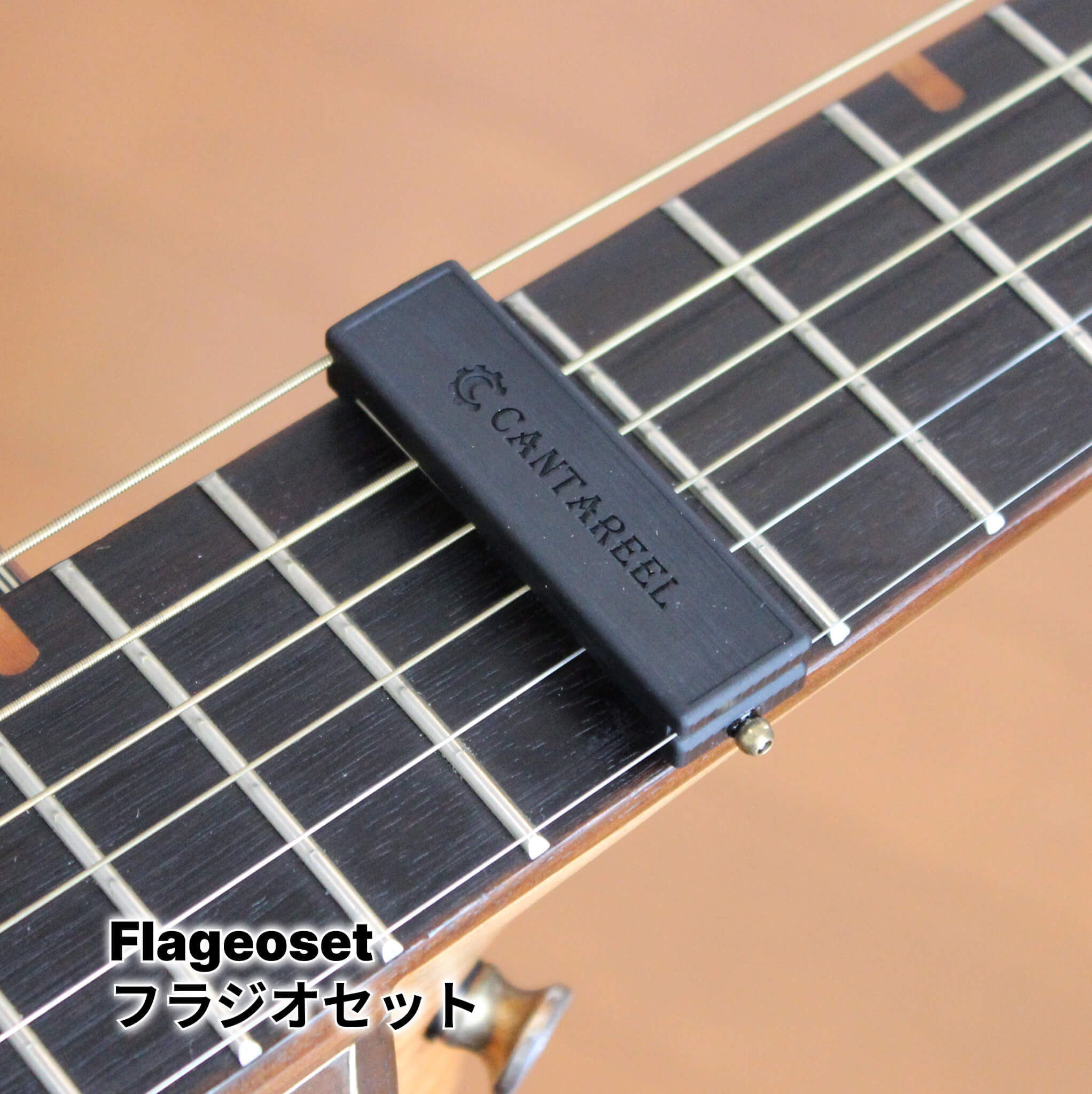How to set up Cantareel
Setting up Cantareel is easy once you get used to it, but proceed slowly at first. We have carefully explained the process in the video, so please take a look.
Example of Cantareel Tuning
The cantareel is played with the four strings from the second to the fifth strings on a regular guitar.
The tuning possibilities are endless, but here are some typical examples.
[DADA]
If you want to play everything from Irish and other ethnic sounds to classical music, DADA is recommended.
[ADGB]
Another way is to play the guitar in its regular tuning. You may feel a little tension tightness.
[GCEA]
If you use the same tuning as the ukulele (one octave lower pitch to be exact), it is useful when playing chords.
Fingerboard chart
The most recommended tuning, DADA, is shown on the fretboard. Please use it.

Cantareel also works well with church modes.
It is recommended that you simply trace the notes of any mode without thinking too hard, as this will give you an atmospheric performance.
Please give it a try.
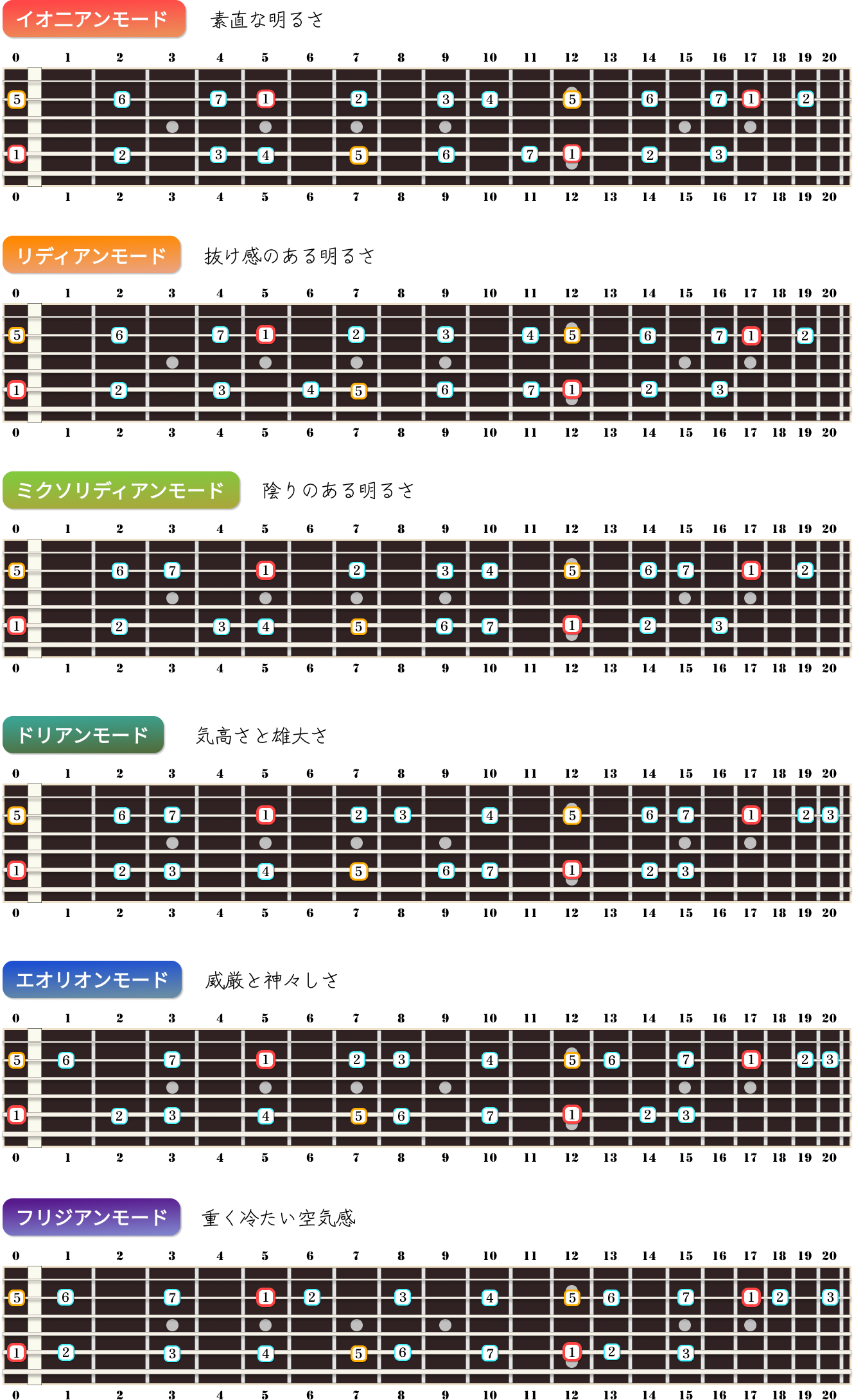
Free Tabs
FAQ
How did Cantareel come to be?
Cantareel is a new invention by Keizo Ishibashi, the developer of Logic Wave, in 2025.
Now, the violin is the most famous of all the stringed instruments that produce sound by rubbing the strings, but there are still a wide variety of instruments in the world.
For example, there is the hurdy-gurdy, an ancient musical instrument that originated in Europe before the 11th century.
The Cantareel is strictly a different principle attachment, as it does not directly rub the strings with the wheel, but rather uses the wheel as a power source to move loops that touches the strings.
Anyway, it can be said that the Cantareel was born because of the hurdy-gurdy, a product of history.
In other words, the Cantareel is a renaissance that pays respect to the wisdom and history of our predecessors and revitalizes them with modern ideas and technology.
It is perhaps because of this background that we feel both “newness” and “nostalgia” toward Cantareel at the same time.
Where did the name Cantareel come from?
The name was created by combining Cantare (Italian for “singing”) and Reel (a tool for winding film or tape).
It expresses the enjoyment of turning the handle and playing as if singing.
What is the best position to put it in?
For steel strings, it is best to install them as close to the soundhole as possible.
If it is too close to the bridge, the sound will be harder and unwanted overtones will be more likely to appear.
For nylon-string guitars, it is best to place it between the soundhole and the bridge.
What kind of strings should I put on?
Regular guitar strings will work fine.
However, we do not recommend “coated” strings such as Elixir, as they are difficult to produce sound.
For acoustic guitars, a light gauge string of about .011-.052 is recommended, and for classical guitars, a string with a higher tension than usual is recommended.
I can't get the sound to work.
Of the cases where the sound does not come out properly, the majority are caused by "rosin not being properly applied".
Once again, please apply rosin firmly.
The next most common cause is “rosin stuck to the strings and slipping”.
Carefully remove any clumps of rosin from the strings with a cloth. Do not use oil or polish at this time.
If it still does not sound, rosin on the loops may be slipping. Clean the loops and strings once.
If oil is used, leave it to dry completely, at least half a day, before applying rosin.
How can I reduce noise?
Since the Cantareel is mounted directly on the guitar's body surface, noise may occur depending on its compatibility with the guitar and its installation point.
If this is the case, first try increasing the tension of the 6th and 1st strings. Or fix it firmly by another way.
What should I pay attention to for maintenance?
1. after playing, carefully wipe off any particles of rosin on the guitar
2. remove any rosin that has stuck to the strings
Basically, these two things are all you need to do.
There is no need to wipe the cantareel or strings with oil or polish.
Rather, if they are wet with oil, rosin will not stick to them and they will not produce sound.
Can't play 6 strings at the same time?
It is possible to play more than five strings if they are secured in some way without hooks.
However, in that case, at least three loops are needed, and the pressure on the strings will be unstable because of the angle.
Also, if all six strings are played, the sound becomes muddy and the melody is often buried.
We did not abandon the 6th and 1st strings by choice, but rather made a proactive choice to prevent excessive resonance and to serve as a stabilizer.
Note that the 6th and 1st strings cannot be played as rubbing strings, but they can function as resonant strings and can be played by pizzicato.
Do the loops need to be replaced?
Loops, like strings, are consumables, but do not need to be changed very often.
Replace them if they break or stretch in any way.
Otherwise, depending on how often you play, it is recommended to replace them every six months or so.

